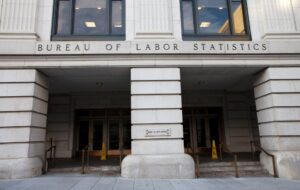
Last week, the Bureau of Labor Statistics issued sharp downward revisions to its job growth estimates for May and June. May’s gain was cut by 125,000, from +144,000 to just +19,000. June’s was reduced by 133,000, leaving a meager +14,000 jobs added. Combined with July’s weak initial estimate of 73,000, the data paint a sobering picture of a labor market losing momentum.
The revisions came just days after the Federal Open Market Committee (FOMC) voted to hold the Fed’s policy rate steady. At the press conference following the meeting, Chair Jerome Powell supported the decision, in part, by citing what he described as continued strength in the labor market — a point he has emphasized repeatedly in recent months.
But not everyone on the Committee agreed.
Fed Governor Christopher Waller — one of two FOMC members who dissented from the decision to hold last week — has been arguing for some time that the Fed should begin cutting its policy rate. In a speech delivered a few weeks before the July meeting, he warned that the initial labor market data for May and June might be overstating the economy’s strength and flagged the risk of downward revisions. As he explained:
A pattern in data revisions in recent years tells us that the private payroll data are being overestimated and will be revised down significantly when the benchmark revision occurs in early 2026. Accounting for the anticipated revision to the level of employment in March 2025 and extrapolating forward, private-sector employment gains last month [June] were much closer to zero. This is why I say private-sector payroll gains are near stall speed and flashing red.
He also made clear that waiting for the labor market to visibly weaken before easing would be a mistake. The risk, he explained, is that the Fed could once again fall behind the curve — just as it did in the aftermath of the pandemic. But this time, it would err in the opposite direction: keeping policy too tight for too long:
If the slowing of economic and employment growth were to accelerate and warrant moving toward a more neutral setting more quickly, then waiting until September or even later in the year would risk us falling behind the curve of appropriate policy.
Unsurprisingly, labor market concerns were central to Waller’s dissent from the Committee’s decision to hold rates steady. Following the FOMC meeting, he reiterated the case for easing:
[W]hile the labor market looks fine on the surface, once we account for expected data revisions, private-sector payroll growth is near stall speed, and other data suggest that the downside risks to the labor market have increased. With underlying inflation near target and the upside risks to inflation limited, we should not wait until the labor market deteriorates before we cut the policy rate.
It seems the market is finally catching up to Waller’s view. Following the BLS revisions, futures pricing shifted sharply. The implied probability of a rate cut in September now stands at 92 percent, up from just 46 percent on July 30, the day of the FOMC meeting. This dramatic swing underscores just how significant the BLS revisions were, and what they reveal about the true state of the economy.
As I argued recently, the Fed may be inadvertently tightening monetary policy despite taking no overt action. If tariffs and broader economic uncertainty are weighing on productivity and investment, they are also likely pulling down the neutral rate of interest. In that case, holding the federal funds rate constant — as the Fed has done since December — means that real interest rates are rising relative to the neutral rate. In short, monetary policy may be far from neutral despite the Fed’s inaction. The recent labor market revisions suggest that this is indeed the case.
Now that we have better data, it is clear that Waller’s concerns were justified. The sharp downward revisions to job growth in May and June confirm that the labor market has been slowing for months. In short, his warning that the Fed risked falling behind the curve by waiting now looks increasingly prescient. The question now is whether his colleagues on the FOMC will recognize the need to change course before it’s too late.
